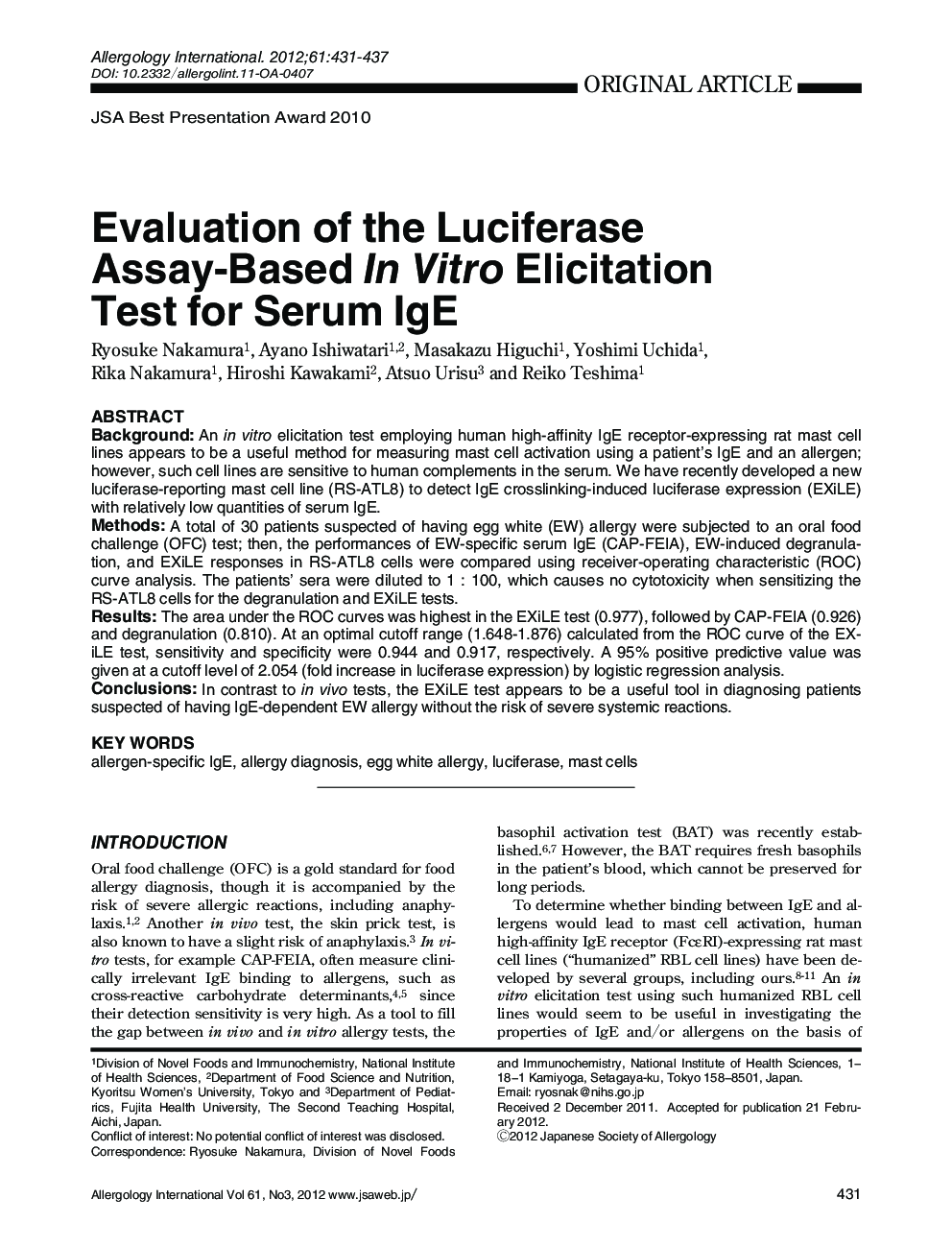| Article ID | Journal | Published Year | Pages | File Type |
|---|---|---|---|---|
| 3340763 | Allergology International | 2012 | 7 Pages |
ABSTRACTBackgroundAn in vitro elicitation test employing human high-affinity IgE receptor-expressing rat mast cell lines appears to be a useful method for measuring mast cell activation using a patient's IgE and an allergen; however, such cell lines are sensitive to human complements in the serum. We have recently developed a new luciferase-reporting mast cell line (RS-ATL8) to detect IgE crosslinking-induced luciferase expression (EXiLE) with relatively low quantities of serum IgE.MethodsA total of 30 patients suspected of having egg white (EW) allergy were subjected to an oral food challenge (OFC) test; then, the performances of EW-specific serum IgE (CAP-FEIA), EW-induced degranulation, and EXiLE responses in RS-ATL8 cells were compared using receiver-operating characteristic (ROC) curve analysis. The patients' sera were diluted to 1:100, which causes no cytotoxicity when sensitizing the RS-ATL8 cells for the degranulation and EXiLE tests.ResultsThe area under the ROC curves was highest in the EXiLE test (0.977), followed by CAP-FEIA (0.926) and degranulation (0.810). At an optimal cutoff range (1.648-1.876) calculated from the ROC curve of the EXiLE test, sensitivity and specificity were 0.944 and 0.917, respectively. A 95% positive predictive value was given at a cutoff level of 2.054 (fold increase in luciferase expression) by logistic regression analysis. Conclusions: In contrast to in vivo tests, the EXiLE test appears to be a useful tool in diagnosing patients suspected of having IgE-dependent EW allergy without the risk of severe systemic reactions.
